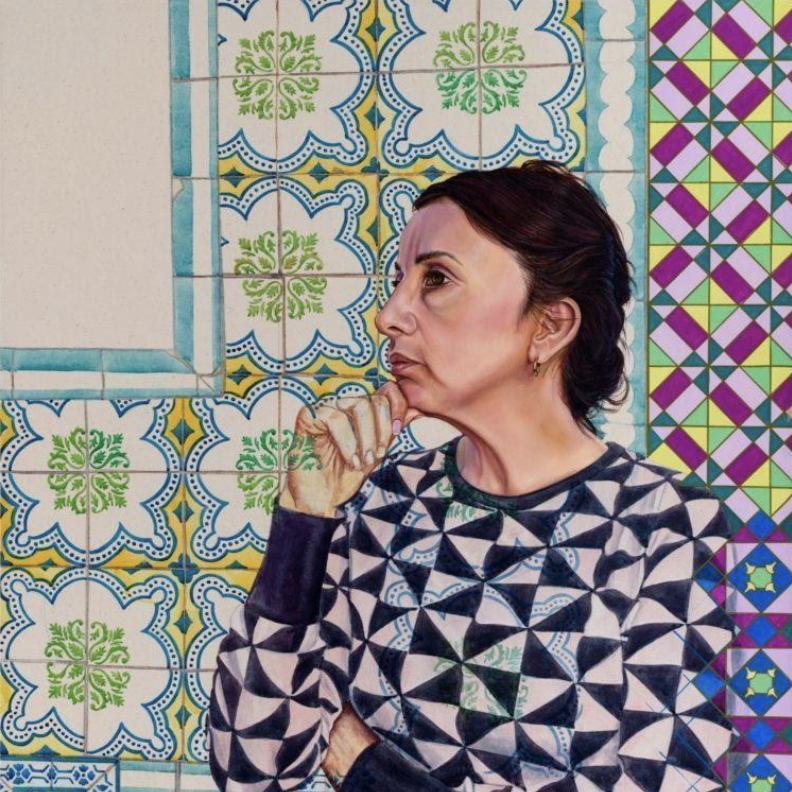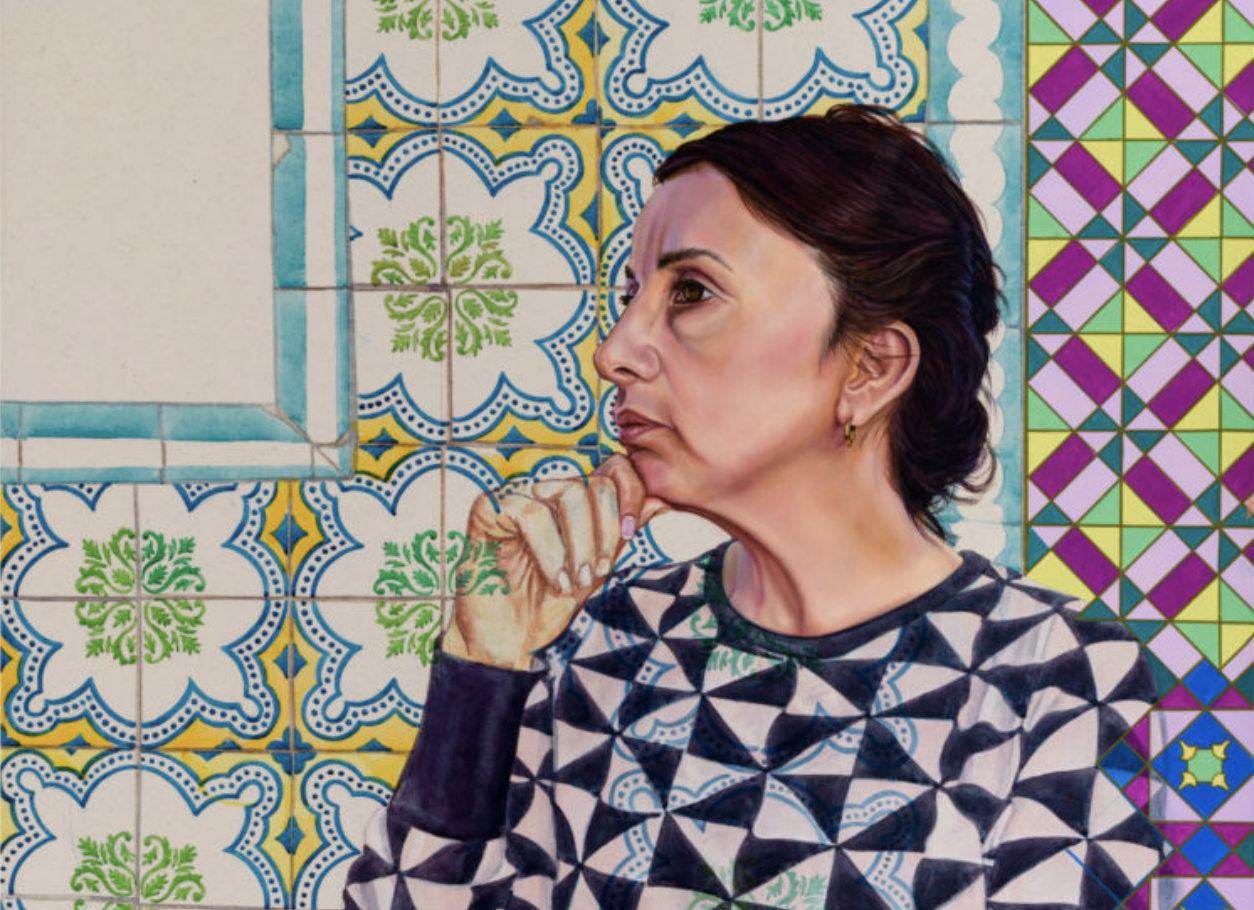Overview
Students will reflect on their art making using close-looking, speaking, writing, and/or sketchbook prompts.
Materials and Tools
- Pencil
- Sketchbook or one to two pieces of paper
- Pattern drawing from previous lesson
Activities
Note: The following activities are written with sample language you may use with your students. Following the art-making lesson, you may choose as many reflection activities as desired for students to work on in class or independently.
Step 1: Introduction/Close Looking: Kira Nam Greene (10-15 minutes)
Hello, artists! In this lesson, we are going to continue exploring patterns. Artists are often inspired by patterns that they see in the world and use them to make their own patterns.
Note to Teachers: Before teaching with a work of art, spend some time closely looking at it on your own. Familiarizing yourself with the artwork will prepare you to guide the close-looking activity.
If your students are new to looking at art together, you can introduce the activity to students in the following way:
Today we are going to spend some time looking at and discussing a work of art together. When we look at art, there are no right or wrong answers. I’m going to ask you to look closely, share your ideas about what you see, and listen respectfully to each other’s ideas. Everyone’s ideas are important. We all see things differently, and when we look at art, we can learn to see through each other’s eyes.

Let’s look closely at this artwork by Kira Nam Greene. Take a moment to look on your own.
Give students a silent minute to look.
Kira Nam Greene learns about patterns from different cultures, then uses them in her artwork.
- Which pattern stands out to you?
- Where is this pattern?
- What lines, shapes, and colors repeat?
Step 2: Writing Activity (10-15 minutes)
Now we are going to write about our own artwork. Start by looking at the pattern you created from your imagination in your drawing.
- What kind of pattern is it?
- Describe the pattern. What lines, shapes, and/or colors did you use?
Based on your students’ writing skills, choose from the options below:
Option 1: Write two sentences that tell us what kind of pattern you drew.
Option 2: Use the sentence frame below to write a sentence about your artwork.I drew a pattern with repeating_____ [color], _____[shape], and ______lines.
Colors
red
blue
green
yellow
purple
Shapes
squares
triangles
circles
ovals
organic
Lines
zigzag
thick
thin
curvy
wavy
Option 3: Label your pattern drawing with the vocabulary words above.
Step 3: Sketchbook Activity (10-15 minutes)
We’ve noticed patterns in our homes and in our world. Many animals have
patterns too! Draw an imaginary animal that has a pattern. You can use a pattern you already drew or create a new one!
- Will your animal have feathers or wings?
- What lines, shapes, or colors will you repeat to make a pattern?
- Will you use stripes? Polka-dots?
Vocabulary
Pattern
Imaginary
Resources
Kira Nam Greene, Saudade de Margarida. 2019, Collection of the Artist: https://kiranamgreene.com/works/saudade-da-margarida/
Kira Nam Greenes’s website: https://kiranamgreene.com/
Adaptations
For Students with Disabilities
- Using sound: Create a pattern with sound (clapping, stomping feet, etc.). This can be done as a group or individually
- Using bodies: As a group, create a pattern with bodies (some students standing up tall, some sitting down, some leaning to the side, etc.)
- With manipulatives: Use found objects like buttons and craft sticks and ask students to create as many different patterns as they can

